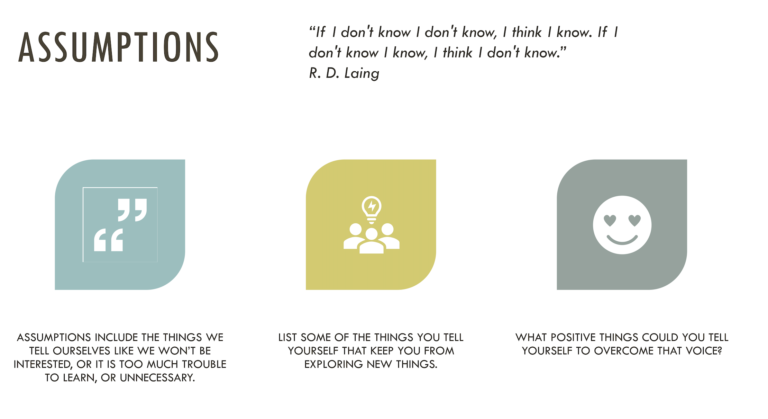How Assumptions Eradicate Curiosity
Think about children under five or six years old. Almost everything they see prompts a question.
Their minds are blank slates, absorbing everything in their paths. If they get confused, they simply ask more questions. Without many prior experiences, young children have few assumptions from which to comprehend the world around them, only curiosity.
Then something happens.
While their childlike curiosity is theoretically a desirable and necessary trait, it can be an inconvenience or even an annoyance to those receiving the questions. (This can be true with adults as well.)
In research on this subject, teachers were given a list of common children’s traits and asked to check those they found desirable in their students. Almost all checked curiosity. But when asked to list desirable traits from scratch, almost none mentioned curiosity. It seems that busy parents and overworked school teachers eventually seek relief from children’s wondrous trait of seemingly endless questioning.
The problem comes when adults stop encouraging children to ask questions. Instead, we give them our own answers and simply tell them what to believe. The result? Eventually, they tend to stop asking questions and start assuming.
Given that scenario, by the time people are thirty or so, they’ve assumed their way to knowing all they need to know to survive in this world. They’ve soaked up knowledge and beliefs from parents, teachers, coaches, churches, college professors, and everyone else who has an opinion. While they may dismiss some of this mountain of data, what they accept they treat as fact, not to be questioned or disputed.
We are these grown-up children.
We accept that the moon landing was real (and not a hoax, as some websites suggest). We accept that hard work is the key to success and that exercise makes us healthier. Our knowledge base is rather well established. Facts are facts.
Or are they? While I do tend to agree with those assumptions, others I’m not so sure about.
Task
Answer this: which of the following statements are true?
- Eating fatty food makes you fat.
- Gluten-free foods are healthier.
- Microwaving kills the nutrients in food.
- You’ll lose a pound of fat for every 3,500 calories you burn.
- Spot training helps you burn fat in specific areas.
Would any of the above seem questionable and warrant further examination?
What about these assumptions?
- History books are accurate.
- We use only ten percent of our brains.
- If you heard it on the news, it must be true.
- If you want to know how a woman will look twenty years from now, look at her mother.
- Lightning never strikes twice in the same place.
Let face it, assumptions are necessary.
Assumptions are easy, but you see how they can bite us.
The watch experiment
Age
Knowing our likes and dislikes
Discussion
There are many sub-components of assumptions including feeling a sense of disinterest, apathy, or that things are just unnecessary.List some of the things that you tell yourself that keep you from exploring new things?Share your comments below!
References
1. Kashdan T. Todd Kashdan. Goodreads.com. 2008 [cited 11 September 2020]. Available from: https://www.goodreads.com/author/show/7033759.Todd_Kashdan
2. Samit J. Disrupt You! Master Personal Transformation, Seize Opportunity and Thrive in the Era of Endless Innovation. London: Bluebird; 2015.
3. James Pitaro – The Walt Disney Company [Internet]. The Walt Disney Company. [cited 11 September 2020]. Available from: https://thewaltdisneycompany.com/leaders/james-pitaro
Share this
Innovative Leadership: Developing Curiosity

Innovative Leadership: Developing Curiosity


Reach your personal and professional goals
Unlock access to hundreds of expert online courses and degrees from top universities and educators to gain accredited qualifications and professional CV-building certificates.
Join over 18 million learners to launch, switch or build upon your career, all at your own pace, across a wide range of topic areas.
Register to receive updates
-
Create an account to receive our newsletter, course recommendations and promotions.
Register for free








